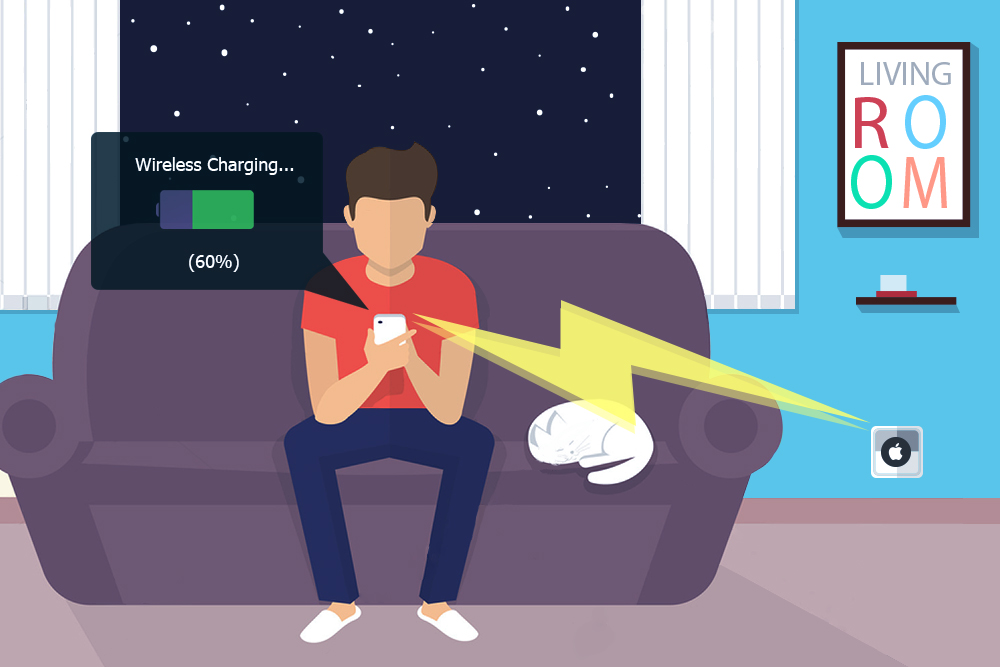
Will The iPhone 8 Lose The Charging Cord?
With each new version of the iPhone, Apple aims to make their smartphone thinner with fewer physical ports.
The latest rumor buzzing around the crowd is that the next iPhone will have wireless charging.
Let’s Look at the Wireless Apple Trend
The iPhone 7 forced users to subscribe to the wireless Earbuds [AirPods]. Speculation is, if you consider this trend, the iPhone 8, or whatever future versions they have, might only allow wireless charging.
However, the problem with allowing both wired and wireless charging is there’s no benefit of one over the other. Why would users pay for a separate wireless charging pad when the device still requires a wire to be plugged into an electrical outlet?
Let’s Take a Deeper Look Into Wireless Smartphone Technology
There are three types of wireless charging technologies the smartphone industry is trying to explore:
- Charging pads that typically use magnetic inductive or resonance technology, which Samsung is using in its devices;
- Charging bowls or through-surface type chargers, which can charge from a few centimeters away and also use magnetic resonance charging technology; and
- WiFi-like wireless charging, which is typically known as uncoupled. It produces less charging power but has a longer range allowing users to move freely while a device powers up.
In terms of development and real-world application, charging pads have been shipping in volume since 2015. Charging bowls/through-surface type are really just launching this year. And, charging across a room is probably still at least a year away from commercial high-volume reality.
Even if the iPhone uses magnetic resonance wireless charging for the iPhone, it will likely be a “baby step” toward an eventual changeover to the Holy Grail of wireless charging: charging over distance with a Wi-Fi-like connection.
Radio Frequency Use for Wireless Charging
Mobile device charging systems work similarly to a wireless router, sending radio frequency signals that mobile devices, such as wearables and mobile phones, can receive. A small RF antenna in the form of PCB board, an ASIC, and software make up the wireless power receivers.
The good side of using radio frequencies to charge a mobile device is that a traditional magnetic charging coil is no longer needed. A mobile device’s Wi-Fi receiver chip can simply be modified so that it receives both the wireless signal for communication and charging.
Apple’s Longstanding Affair With Wireless
Whatever wireless charging method Apple chooses, if indeed it does so this year, there will likely be something proprietary added to it. Since the last decade, Apple has filed several patents on wireless charging.
Way back in 2005, an Apple patent described technology for an iPod using zero-contact induction for both charging and data transfer – most likely to manage device charging.
In a 2012 Apple patent filing, the company described a near field magnetic resonance (NFMR) power supply, which can wirelessly provide power to any of a number of suitably configured devices.
Apple’s patent description stated that a charging distance of about one meter, which could be projected out from a desktop computer, such as the iMac, can power peripheral devices, such as a wireless mouse.
Looking at Apple’s history, it is undeniable that we might see wireless charging soon.
Recent Posts
- How Does GPON Improve Network Efficiency?
- What Are The Advantages Of GPON?
- What Are The Benefits Of IT Outsourcing?
- What's The Deal With Ransomware Attacks?
- Are GPON Providers Widely Available?
- What's GPON's Impact On Bandwidth?
- Why Is Multi-Factor Authentication Important?
- How To Ensure Data Privacy Compliance?
 Blogs
Blogs Infographics
Infographics Videos
Videos Podcasts
Podcasts Case Studies
Case Studies Call For Quote
Call For Quote